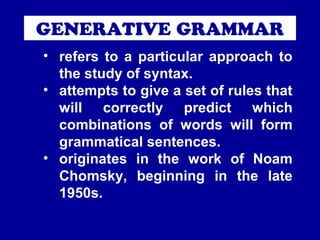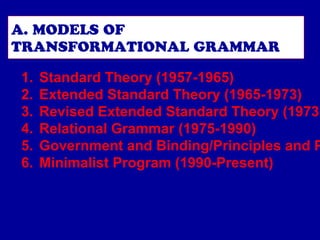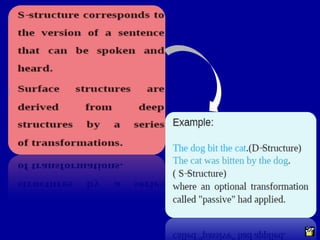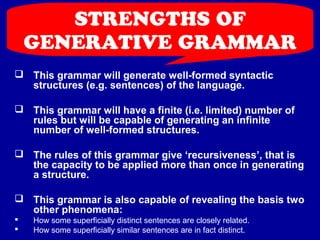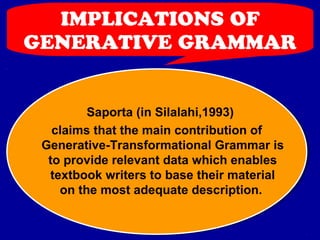This document provides an overview of generative grammar and its evolution over time. It discusses the following models of transformational grammar: (1) Standard Theory, (2) Extended Standard Theory, (3) Revised Extended Standard Theory, (4) Relational Grammar, (5) Government and Binding/Principles and Parameters, and (6) Minimalist Program. Each model made contributions and revisions to the theory. The document also discusses strengths, weaknesses, and implications of generative grammar for language teaching.

